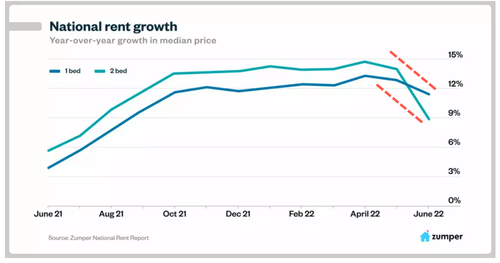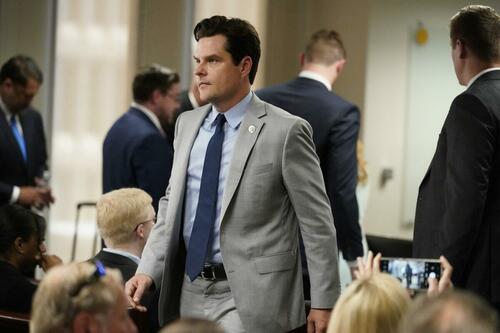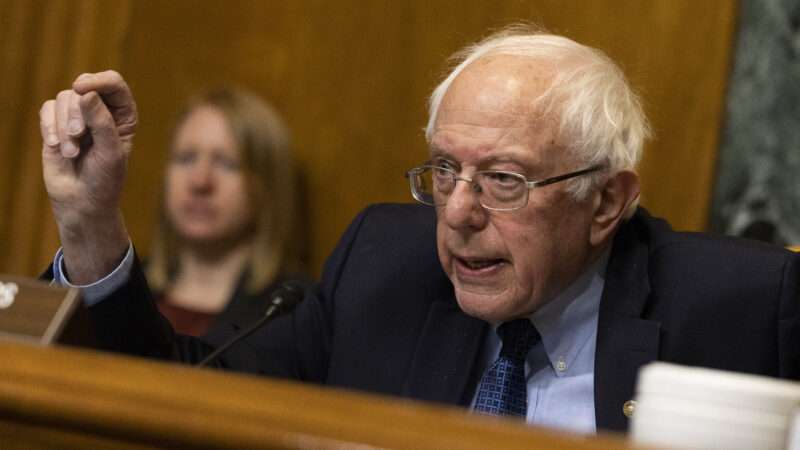
New York Gov. Kathy Hochul last week signed legislation that supposedly complies with the Supreme Court’s recent ruling against her state’s restrictions on carrying guns in public. In New York State Rifle & Pistol Association v. Bruen, decided on June 23, the Court said New York’s “proper cause” requirement for carry permits violated the Second Amendment. New York’s law, the majority noted, gave local officials broad discretion to reject applications, transforming “the right of the people to keep and bear arms” into a privilege for the few.
The new law preserves much of that discretion under a different name, and it creates an expansive list of “sensitive locations” where guns are prohibited, making it difficult or impossible even for permit holders to carry firearms for self-defense. By failing to take the Court’s objections to the old policy seriously, New York is inviting another constitutional challenge.
“This measure will, among other punitive and prohibitive provisions, broadly expand…the onerous burdens to acquire government permission slips for the exercise of fundamental rights [and] throttle the locations New Yorkers might actually exercise those rights,” says the Firearms Policy Coalition (FPC). “New Yorkers’ natural rights [are] of paramount importance, whether the tyrants in Albany think so or not. The governor and her cadre of anti-rights legislators should have no doubt that FPC will utilize every available instrument to remedy this historic wrong.”
Under S.B. 51001, carry-permit applicants no longer have to show “proper cause” for bearing arms, which state courts had interpreted to mean more than a general interest in self-defense. But applicants still have to demonstrate “good moral character,” newly defined as “having the essential character, temperament and judgment necessary to be entrusted with a weapon and to use it only in a manner that does not endanger oneself or others.” Toward that end, the law requires “no less than four character references who can attest to the applicant’s good moral character.”
Those references are not necessarily decisive. In addition to passing background checks and completing firearms training, applicants must submit “a list of former and current social media accounts” from the previous three years “to confirm the information regarding the applicant’s character and conduct.” It is not hard to imagine how licensing officials might use such information, possibly including unseemly firearm enthusiasm or intemperate political remarks, in assessing whether an applicant should be “entrusted with a weapon.”
Licensing officials are also authorized to require “other information” that is “reasonably necessary and related to the review of the licensing application.” If they decide not to grant a license, the applicant has 90 days to request a hearing before an appeals board created by the commissioner of criminal justice services and the state police superintendent. Those officials are charged with writing the rules governing the appeals process, which probably will not be friendly to spurned applicants.
If a gun owner successfully jumps through the state’s hoops, he will be authorized to carry a concealed weapon outside his home. But not on government property or in health care facilities, houses of worship, libraries, playgrounds, parks, zoos, museums, child care facilities, schools (including college campuses), public transportation vehicles or stations, bars or restaurants licensed to serve alcohol, sports or entertainment venues, amusement parks, casinos or racetracks, conference centers, banquet halls, protest locations, or “the area commonly known as Times Square.” A permit holder will not even be allowed to carry a gun on sidewalks when they have been “restricted from general public access for a limited time or special event,” which happens on a regular basis in New York City.
Possessing a gun in any of those “sensitive locations” is a Class E felony, punishable by up to four years in prison. Any license holder who wants to take advantage of his newly granted permission to carry a handgun for self-defense will have to think long and hard about whether he might enter or traverse any of those locations after leaving home. And if he specifically wants to protect himself or others while attending church, riding public transportation, visiting Times Square, or engaging in the many other activities that the state has deemed inconsistent with possessing a gun, he will have to recognize that he is risking a felony charge that could upturn his life and send him to prison.
The same law contradictorily states that owners of “private property” may choose to allow guns, provided they post notices to that effect. But that is plainly not true if the private property happens to fall into one of the categories defined as “sensitive locations.”
Hochul says the law “makes ‘no carry’ the default for private property, unless [guns are] deemed permissible by property owners.” That policy, she claims, “gives power to business and property owners to decide whether or not they want guns in their establishments, which could include bars, restaurants, shops or grocery stores.” But the state has already made that decision for restaurant owners with liquor licenses, and bar owners likewise will not have a choice in the matter unless they operate one of those rare taverns that do not serve alcoholic beverages. The state likewise is overriding the discretion of property owners who show movies, present plays, host concerts or games, display art or animals, let people gamble, educate or edify them, etc.
Hochul does not bother to justify all these restrictions. In a press-conference exchange with Anne McCloy, a news anchor at the CBS station in Albany, the governor said she did not need any evidence suggesting that carry-permit holders—law-abiding by definition—are implicated in the gun violence she claims to be preventing.
“Do you have the numbers to show that it’s the concealed-carry permit holders that are committing crimes?” McCloy asked. She noted that “the lawful gun owner will say that you’re attacking the wrong person,” that “it’s really the people that are getting these guns illegally that are causing the violence, not the people going and getting the permit legally.” That distinction, McCloy suggested, “is the basis for the whole Supreme Court argument.”
Hochul’s response was revealing. “I don’t need to have numbers,” she said. “I don’t have to have a data point to point to to say this is going to [matter]. All I know is that I have a responsibility to the people of this state to have sensible gun safety laws….I don’t need a data point to make the case that I have a responsibility to protect the people of this state.” In other words, good intentions are all that matters, even if you cannot offer reasons to think they will generate good results.
Hochul seems to entirely miss the point that the Supreme Court made in Bruen, which ruled out the sort of “interest-balancing” approach that she is clumsily applying. According to the Court, the constitutional test for a gun control law is not whether politicians or judges think its benefits will outweigh the burden it imposes on Second Amendment rights. The test is whether the law is analogous to restrictions that have traditionally been viewed as consistent with the right to keep and bear arms. When a law makes it nearly impossible to exercise that right, as New York’s former policy did and its new policy will, “numbers” or “data point[s],” even if they are apposite and persuasive, cannot justify it.
The “sensitive locations” ploy, which Hochul says was developed after “extensive discussions with constitutional and policy experts,” tries to take advantage of a distinction that the Court drew in the landmark Second Amendment case District of Columbia v. Heller. Writing for the majority, Justice Antonin Scalia said “nothing in our opinion should be taken to cast doubt on longstanding prohibitions,” such as “laws forbidding the carrying of firearms in sensitive places such as schools and government buildings.” But under Bruen‘s logic, that exception does not allow a state to multiply the number of “sensitive places” to the point that actually carrying a gun for self-defense, even with a permit, is legally perilous.
Hochul obviously is no fan of Bruen, which she describes as “a reckless decision” that “remov[ed] century-old limitations on who is allowed to carry concealed weapons in our state—senselessly sending us backward and putting the safety of our residents in jeopardy.” Hochul nevertheless is obliged to obey that decision. Instead she is begging for a lawsuit to make her.
The post After a SCOTUS Rebuke, New York Imposes Oppressive New Restrictions on the Right To Bear Arms appeared first on Reason.com.
from Latest https://ift.tt/51lnIyL
via IFTTT







